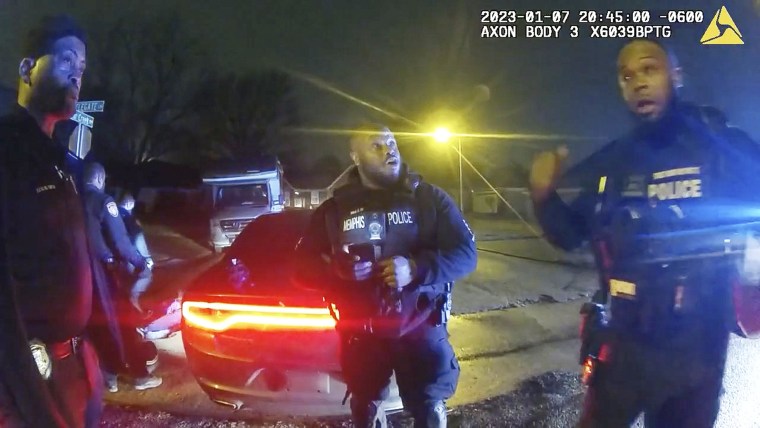Last Friday’s release of body camera footage in both the assault on Paul Pelosi and the killing of Tyre Nichols highlights both America’s fascination with body cameras — and this heralded technology’s limitations. While we crave a hard truth about the nature of policing that will make us safer and hold police accountable, these videos have failed to reassure us on either front.
America has a lurid fascination with police, who occupy a special place in the social imagination.
America has a lurid fascination with police, who occupy a special place in the social imagination. At night, we watch fictionalized portrayals of police solving crimes and getting the bad guys, sometimes in ways that are violent, fall outside the law and shock our conscience. We want the police to protect us from “the bad guys,” but the way they do it is stained by their methods. We want to be able to see behind the curtain — from a safe distance — and observe the true inner workings of an institution. We want reassurance that policing will keep us safe.
Many have tried to lift that curtain. So-called “reality TV” shows such as “Cops” and “Live PD” provided a glimpse of that world with police jumping out of cars to engage in foot chases with lights and cameras following close behind or barging into people’s homes during their worst moments. But these shows focus entirely on moralizing narratives and crafty editing that always celebrate the police. They fail to reveal that darker truth that we know lies beyond the bright lights.
In the wake of the police killings of Michael Brown, Eric Garner, Tamir Rice and so many others in 2014, Americans were told there would be a new way to know what really happened; to see with our own eyes the truth of policing. Officer-worn body cameras would finally lift the curtain. Millions of dollars have been poured into this technology, which is now widespread. Police departments said that the presence of cameras would both tell us the truth and act as a deterrent to the worst police abuses. The footage would mean citizens and officials alike would no longer have to take the official police narratives or the carefully constructed functional drama at face value.
But the Pelosi and Nichols videos illustrate both our fascination with body cameras and their failure to deliver the goods. In the Pelosi footage, officers arrive at the front door of the Pelosi home with the door open and two men gripping a hammer. The officers are attempting to calmly assess the situation when the assailant gains control of the hammer and, right in front of the police, swings the hammer at Pelosi’s head with full force. The officers dutifully jump into action and restrain the man, but only after the damage has been done.
What truth was uncovered from viewing this? Although it should definitely put to rest the many mostly far-right conspiracy theories that proliferated in the wake of the attack, the unsatisfying fact is that even when the police are at your doorstep, they are not always able to protect you. That, despite their good intentions, their presence does not equal safety.
In the case of Nichols’ beating by Memphis police, the footage released is incomplete (as is often the case). The officers who made the initial stop were part of a now-disbanded plainclothes squad who didn’t wear body cameras. We are left to view footage from uniformed officers as they arrive on the scene. What we do see, however, is a litany of horrors. A young man in his car, who has not committed any crime, is set upon by officers based on their suspicions that something is amiss and ultimately beaten to death while being restrained.
Increasingly, the police know they are being filmed, but can use the cameras to establish a false narrative. An officer in Baltimore was found to be using his camera to “re-create” the discovery of drugs he claimed to have found earlier. In this case, even though they had Nichols restrained, officers continued to yell out “give me your hands” to justify for the cameras the beating they were giving him.
In the end, the presence of body cameras did nothing to reduce the police use of violence. They did not save his life. It turns out that the hoped for value of deterrence just isn’t there in the ways we imagined. A systematic study of the introduction of body cameras in some neighborhoods in Washington, D.C., showed they made no measurable difference in any aspect of policing. But the city decided to give cameras to all officers anyway because police officers were using them for evidence collection.
Body cameras are not going to save Americans or give us a deeper truth about the world of violence that police inhabit and produce. The truth is already out there in the long history of policing. We merely refuse to look at it. We hide behind empty hopes that a little training, oversight and accountability will somehow transform an institution rooted in the use of violence to maintain systems of inequality. From Ferguson to Minneapolis to Memphis, the demand on the streets is not for more technology for police; it is to dismantle policing and replace it with less harmful alternatives in as many ways as we possibly can.
